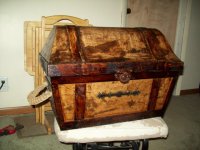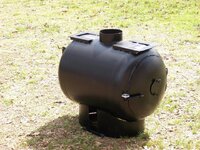Charlie P. (NY)
Gold Member
- Feb 3, 2006
- 13,010
- 17,138
- Detector(s) used
- Minelab Musketeer Advantage Pro w/8" & 10" DD coils/Fisher F75se(Upgraded to LTD2) w/11" DD, 6.5" concentric & 9.5" NEL Sharpshooter DD coils/Sunray FX-1 Probe & F-Point/Black Widows/Rattler headphone
- Primary Interest:
- Metal Detecting
Dunfield built the 600 and some foot long causeway in 1965 with much of the excavated soil, and when he was done backfilled the excavations. That's why there is wood all the way down below 150 ft deep where he dug holes. Other hunters constructed damns and cofferdamns in the swamp and at least one of the coves. Somewhere along the line a roadway was built that sealed off the swamp - that's another couple hundred cubic yards of graded fill that may have been from surface heaps.
That poor island has been dug, filled and re dug a dozen times. 1849, 1852, 1856, 1866, 1893, 1909, 1931, 1935, 1959, 1965, 1969, 1971, 1983, and now the Lagina Bros.
That poor island has been dug, filled and re dug a dozen times. 1849, 1852, 1856, 1866, 1893, 1909, 1931, 1935, 1959, 1965, 1969, 1971, 1983, and now the Lagina Bros.
Last edited:











